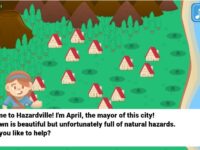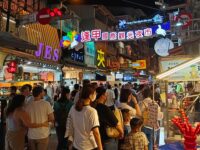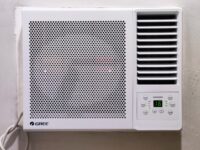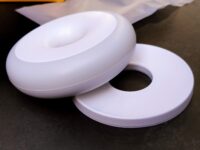How much time do you spend in traffic every year? On average, Metro Manilans spend 402 hours a year in traffic! Ouch!
Imagine, 402 hours – that’s the equivalent of about 23 days! (not counting sleep) Twenty-three days that should have been better spent doing something more productive and more enjoyable: like vacations, hobbies, and family time, and more importantly for sleep-deprived working people, SLEEP! More sleeping time! Who wouldn’t want that?
HOW MUCH DO WE LOSE TO TRAFFIC?
Uber recently commissioned the Boston Consulting Group (BCG) to do a study on the impact of ride-sharing in Southeast Asia, and here’s an info-graphic summary of what they found. I’m just sharing the Manila portion:
We really have to do something about our traffic problem because losing 23 days out of 365 to traffic is just terrible. That’s equivalent to the working days of one month. One month! Lost to something so useless, and we’ll never get that time back.
TRAFFIC – HOW HAVE WE COME TO THIS?
When we think of traffic, the first cause we think of is that we have too many cars on the road. And, basically, I agree. I also think that vehicles who stop to pick up and drop off passengers on every corner, roadside, and even in the middle of the road also cause a lot of the traffic bottlenecks. The loss of sidewalks that cause pedestrians to walk on the street, illegal parking, poor urban planning, etc… are major contributors to our traffic problem, too.
Earlier today, we were invited to lunch with Uber where they presented their findings and showed how ride-sharing can help ease our traffic situation.
In a nutshell, if everybody drives their own car to go anywhere, we will definitely not have enough space for all the cars. Some cities Jakarta and Ho Chi Minh City are projected to come to a complete standstill in 5 years!
This new video from Uber, titled “Boxes”, gives us an idea of how things will go if we keep adding more cars on the road:
The video was shot in Bangkok, but it can easily portray any major city in Asia.
HOW RIDE-SHARING CAN HELP EASE TRAFFIC
In our culture right now, driving your own car can be seen as a status symbol. Personally, I see it more as a practical necessity rather than as a status symbol.
I want to get from point A to point B safely and comfortably, and bringing a car gives me control of where I can go and what/who I can bring. I don’t have to worry about price surges, either. It’s also a little “home away from home” that I have set up with emergency kits that I can easily get to should I need them. I even leave a pair of shoes in the car that goes with all my outfits, so that’s one less hassle to worry about when I’m heading out the door.
However, that doesn’t mean that I like driving all the time. Driving doesn’t make me happy, I’m not one of those people who find joy in front of the wheel. I just do it because I have to do it, because our public transportation system is like an obstacle course and driving is better than going through all that.
If I don’t have to bring a lot of stuff with me, if I don’t need to pick up other people, if all I need to do is to get from one place to another with no side trips, I will definitely think about using a ride-sharing service instead.
Also, of course, I use a ride-sharing service during coding days.
In many cases where my destination is very far or finding parking there is difficult, I opt for ride-sharing. Ehem, ehem (Makati, BGC, Eastwood, Maginhawa, Marikina).
And sometimes, for Eastwood, Maginhawa and Marikina destinations, I use a combination of LRT + Uber. An LRT-2 station is a short jeepney ride from me, I take the LRT-2, for example, to the Cubao (Gateway) or Katipunan stations, and then I get an Uber to take me from the LRT station to my final destination. This saves me both time and money – the Uber fare is cheaper than if I took an Uber all the way from my house, and the use of the LRT gives a faster travel time than driving the whole way. See? Ride-sharing can complement public transport! It’s called the first/last mile feeder system.
I am sincerely hoping that the government will do more to improve the public transportation system so this sort of first/last mile feeder system becomes more practical in other places in Metro Manila, too. Hello, Alabang! 😀 Wouldn’t it be great to just take a fast train to Alabang and then just get an Uber from there to my destination? I avoid going to Alabang because of the distance, cost of gas, and the expensive toll fees.
Most of the time, using a ride-sharing service is just the more practical option. Not only can it save you time & money, not having your car on the road and occupying parking space on the street or in a mall parking lot will also do a little to ease our traffic congestion problems.
If ride-sharing becomes a viable substitute for car ownership, we can even reduce the cars on the road by 1,000,000 cars! Many millenials are even starting to realize that car ownership is not necessary anymore.
Imagine how much you can save if you don’t have to buy a car. A brand new car (entry-level sedan) today costs around P600,000 – P800,000. Then you also have to pay for insurance, registration fees every year, regular maintenance, gas and parking. You could spend all that money on your dream vacation instead, or travel around the world.
All the space that was previously allocated to parking can also be freed up for more parks, and I definitely think we need more quality, tree-filled parks in Metro Manila.
Hopefully this will lead to less time wasted in traffic, and a better quality of life for Metro Manilans. 🙂
Let’s #ridetogether and create better cities with fewer cars. #UnlockManila
You can read more about the study at www.unlockingcities.com.
















